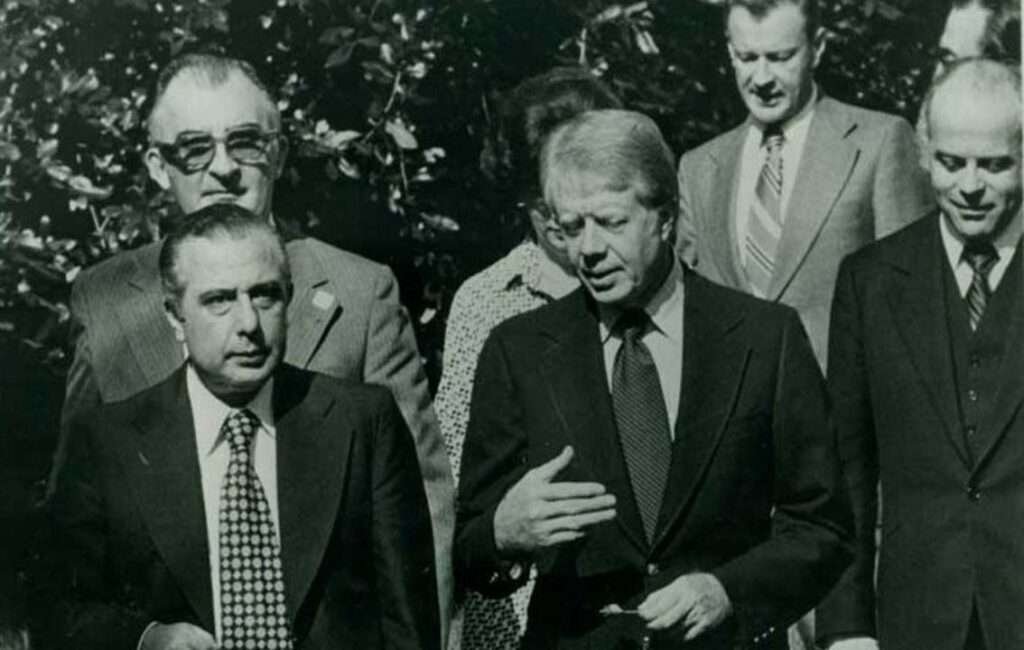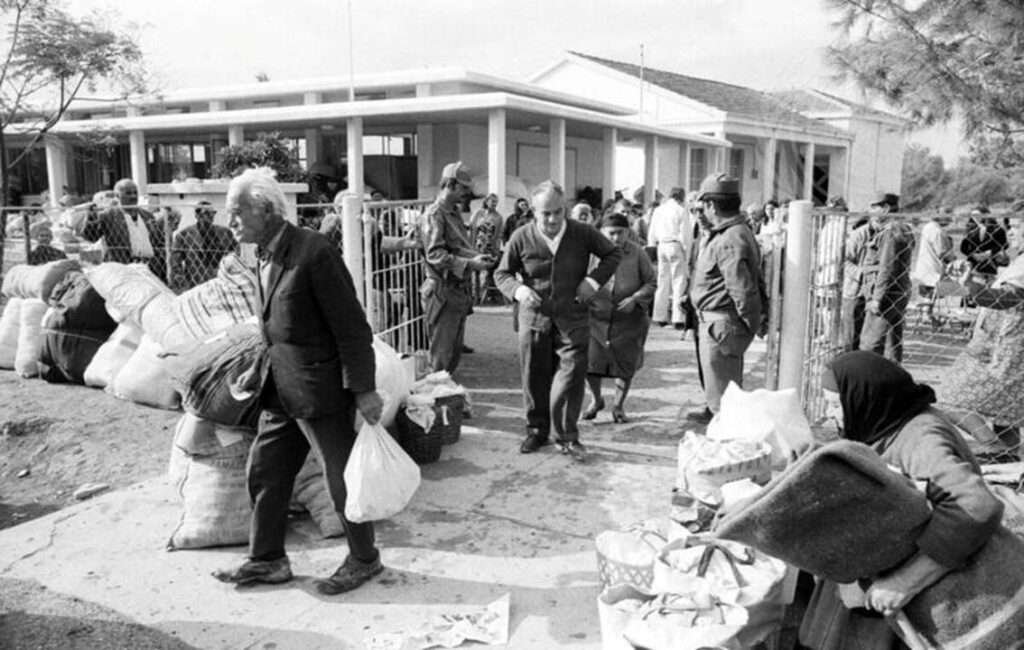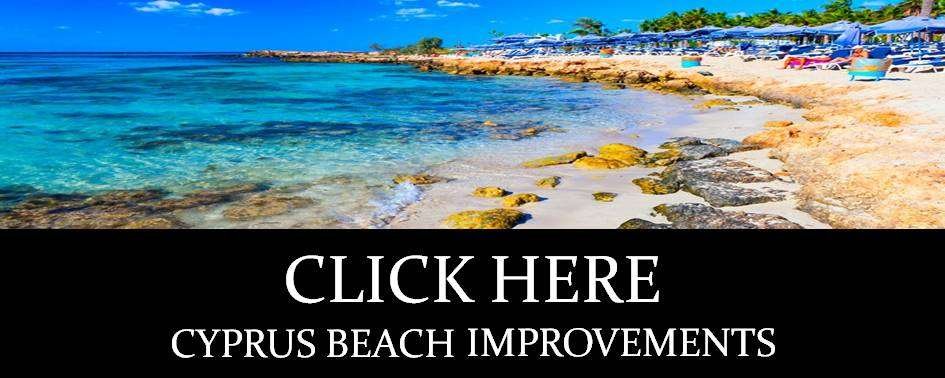JIMMY CARTER'S ELECTION WIN IN 1976 HERALDED A NEW HOPE FOR A CYPRUS SOLUTION


A STATE OF UNANIMOUS ELATION
Greek Cypriots greeted JIMMY CARTER’S close-run victory in 1976 with almost unanimous elation. This was largely because the 39th president of the United States was elected on a campaign of change. Coming after various world conflicts, Carter was offering the world a stark alternative in American foreign policy that was promising to resolve conflicts and restore a balance in world affairs.
A REAL CHANCE FOR REUNIFICATION
Now living in the south of Cyprus, under the auspices of two and a half years of division, several Greek Cypriots, after realising this, came together in celebration. They believed that Carter’s appointment offered a real chance of a fair solution and the reunification of their small island nation. They then expressed their joy and optimism using several island-wide gestures.
ISLAND-WIDE CELEBRATIONS
After the result was confirmed, church bells immediately rang, celebrating Carter’s victory. The weeks that followed his victoory also saw several schoolchildren, advocating reunification with a renewed optimism, constantly parading through the streets. Several rallies in support of the Carter administration were also held. As a result, demonstrators were often found waving American flags and carrying placards outside the American Embassy in Nicosia.
A DIVIDED ISLAND
The events of the summer of 1974 were still fresh in everyone’s minds at the time. A Greek-inspired coup d’état that began on July 15th had led to a military intervention by Turkey on July 20th. This resulted in the invasion and then subsequent occupation of the northern part of the island. Thousands of people on both sides of the new de facto ‘green line’ were then displaced after the two main Cypriot communities were separated. Greek Cypriots in the north were expelled to the south, whilst Turkish Cypriots in the south were offered several incentives to repatriate to the north. It was thought at the time that President Carter’s new administration would bring about the end of this seperation and find a viable and fair solution to the then two and a half year old Cyprus problem.
WAS AMERICA CULPABLE?
Several Greek Cypriots at the time had also noted the previous American administration’s inactive response in 1974. They believed that this both enabled and, to an extent, encouraged Turkey’s new political strategy regarding Northern Cyprus. This new political strategy revived an old Turkish Cypriot idea that became known as ‘Taxim’. This rigorously encouraged the division of the island.
WHAT DID AMERICA REALLY WANT?
The inaction of President Ford, along with his Secretary of State, Henry Kissinger, were also viewed by most as partly culpable for the continued separation thereafter. JIMMY CARTER, on the other hand, represented a much-needed change. Greek Cypriots believed that he was the best man in charge to find a solution that would accommodate both sides. This was enforced by the fact that President Carter had often expressed a constructive attitude towards resolving the Cyprus problem before he became president. He also made several statements about returning displaced people during his election campaign. This gave new hope to the thousands of displaced people living in Cyprus at the time.
A TURNING POINT IN RELATIONS
The then-president of the Republic of Cyprus, ARCHBISHOP MAKARIOS III, also openly expressed a renewed hope at the time. He firmly believed that Carter’s new administration would mark a turning point in relations between Cyprus and the United States. The Archbishop openly expressed hope that new negotiations would lead to a fair and just solution to the ongoing Cyprus problem. As a result, he immediately opened channels of communication with the new American regime. He set out mandates that offered an acceptable solution to the Cyprus problem. This helped to prompt President Carter’s new administration into almost immediate action.
A NEW PLAN
President Carter went on to appoint a special envoy to Cyprus. This came in the form of Clark Clifford. He would go on to work closely with delegates from both the United Kingdom and Canada. This resulted in a new plan to resolve the Cyprus problem. The new plan, which would become known as the Anglo-American-Canadian accord, was submitted in 1978. It was largely based on the 1977 High-Level Agreement reached between Archbishop Makarios III and Rauf Denktash, who was the Turkish Cypriot representative of Northern Cyprus at the time.
THE ANGLO-AMERICAN-CANADIAN PLAN
The Anglo-American-Canadian plan stipulated the creation of a bizonal, bi-communal federation in Cyprus. It also facilitated the withdrawal of most of the Turkish troops stationed on the island at the time. It included the reopening and subsequent restoration of the City of Famagusta, and foresaw and provided for the return of land and property to both Greek and Turkish displaced Cypriots. The plan also allowed for compensation to be paid for those who did not want to return to their former homes.
INITIALLY BACKED EVENTUALLY BLOCKED!
Although almost all of the Greek Cypriot political parties initially backed the plan, the new president of the Republic of Cyprus, SPIROS KYPRIANOU, was apprehensive and ultimately rejected it. It seems that the feeling at the time was to hold out for a better solution for the Greek Cypriot Republic in the south. As the Turkish-controlled Northern Cyprus remained unrecognised internationally, it was thought that it would not want to remain as such for a prolonged period. This thought, however, was largely miscalculated as this part of Cyprus has remained unrecognised internationally ever since.
SHOULD THE PLAN HAVE BEEN ACCEPTED?
The consequences of the division of both Greek and Turkish Cypriots have left the island reeling since the summer of 1974 onwards. Along with hindsight, several Greek Cypriot politicians have since indicated that the Anglo-American-Canadian accord was the best plan ever produced. Several have also stated that President Kyprianou should have accepted it in 1978. Most claim that this would have forged a much better future for all Cypriots, both Greek and Turkish and that today the island would have at least been reunified.


